|
 Fall 2018 projects |
||||
|
Return to Gallery page |
Click on images for larger view. 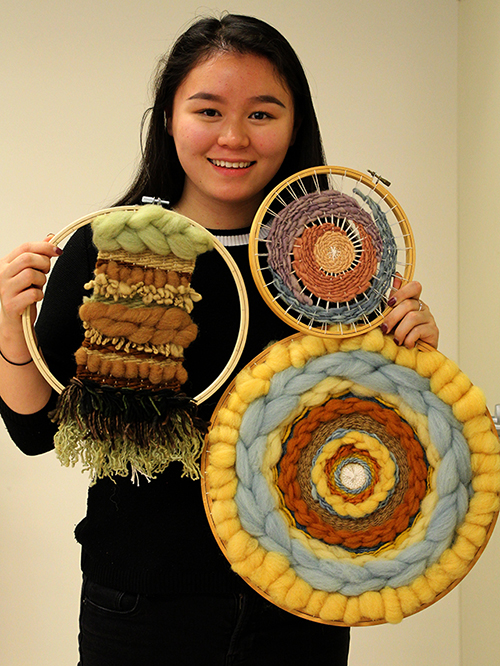 Naturally dyed, hand-spun, and woven wool: Forest Escape, Dreamcatcher, and It’s Always Sunny. “The individual color schemes of these pieces each connote different feelings but under the theme of an ‘ordinary paradise’… Throughout this project I definitely learned to work with the unpredictability of natural dyes and accidental colors by letting go of some control.” 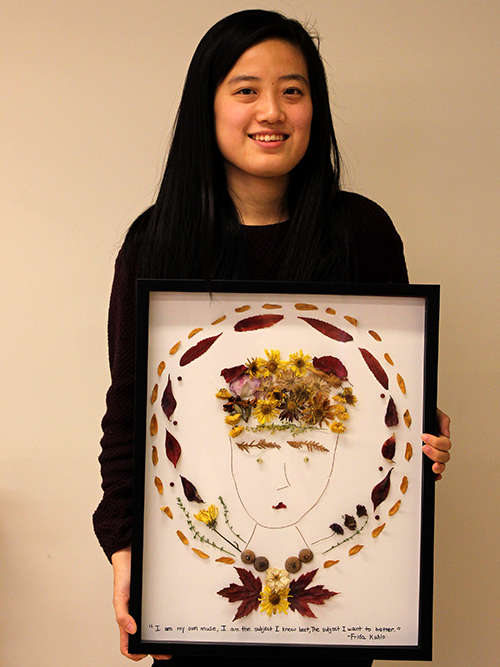 Portrait of Frida Kahlo in locally collected and preserved flora. “I choose to do portraits because growing up, I always struggled with perfecting the eyes, nose, and lips, and so I thought that doing this project would relieve myself of this pressure and instead challenge me to find plants in nature that would be representative. This project encouraged me be more aware of my surroundings and the flowers and plants that I often walk by.” 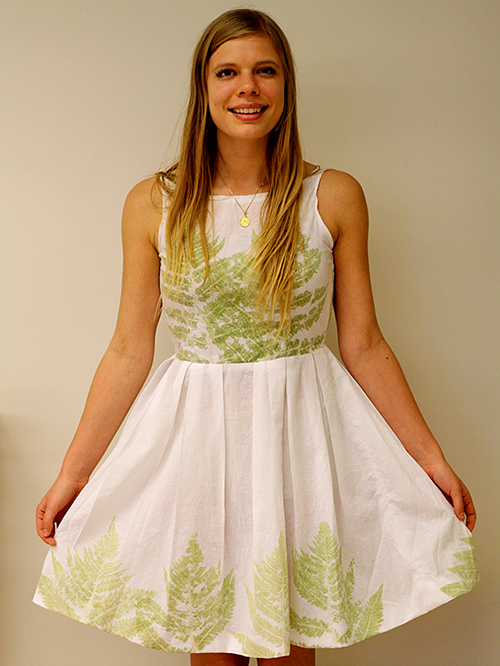 Handmade cotton dress with pounded Goldie’s Fern (Dryopteris goldiana) print. “Creating a dress is a project I’ve always dreamt of completing, but have not had the motivation, time, or materials to begin… The ferns transferred their patterns beautifully onto fabric, and I felt inspired by their elegance and personality.” Scanned flowers kaleidoscopically animated and set to music. “Documenting the flowers you see around is almost like journaling. I decided that I wanted to create a collection of scans that depict the changing seasons as well as change in my life, especially as a senior looking back… I then animated each scan into kaleidoscopic shapes so that each picture came alive and bloomed into an entirely new ever-changing flower.” Strawberry Swing (above), Them Changes, Creeks. 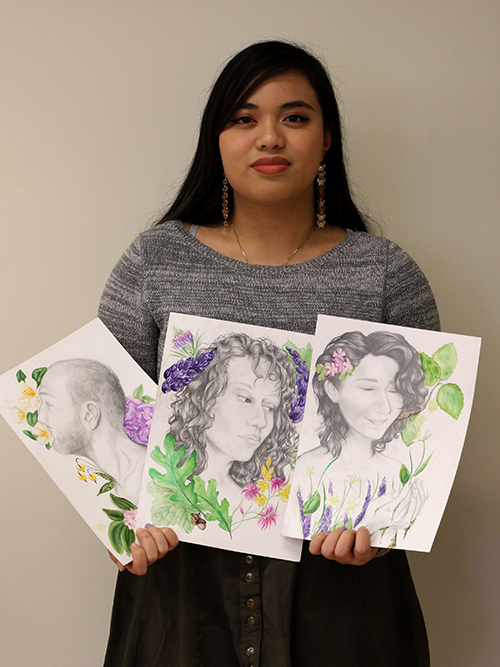 Portraits of friends with floral symbolism from Victorian and Japanese traditions. “Flower language has an inherently intimate and human element to it, so I used flower language to explore people I'm close to and our relationship with each other.” 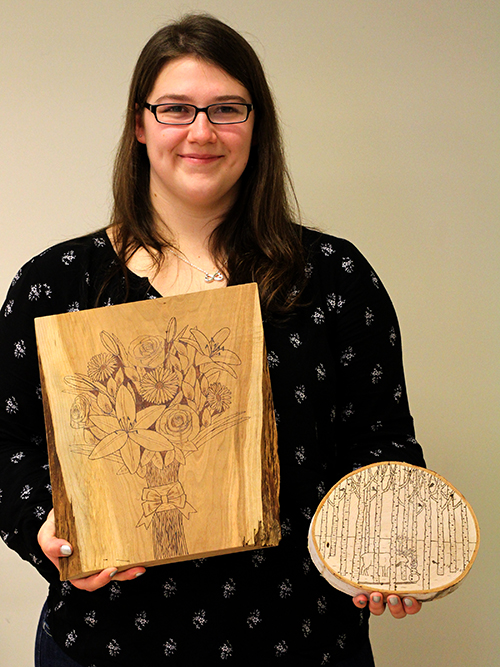 Wood-burned illustrations on cherry and birch. Wood-burned illustrations on cherry and birch. “Throughout this project I was able to sharpen the skills I had and learn new ones. I hadn't done scenes before and this is the first time that I used plants as a focal point.” 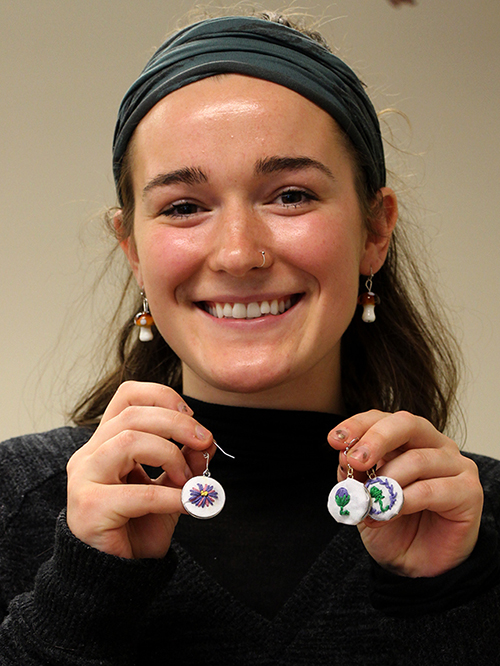 Embroidered earrings depicting three emerging flower stages of the New England aster (Symphiotrichum novae-angliae). Embroidered earrings depicting three emerging flower stages of the New England aster (Symphiotrichum novae-angliae).
“I see these as similar to the stages that my grandma, my mom, and I are in. This flower is special to me because it is in the wildflower field near my grandma’s house.” 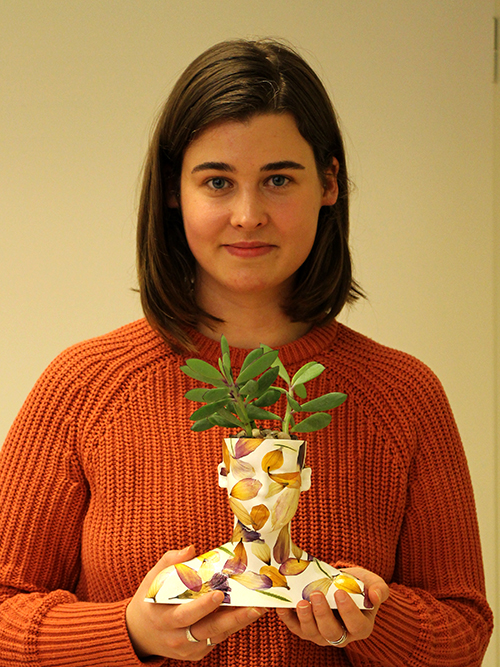 3D-printed bust of artist with pressed flower petals and live succulents. “This bust shows the aesthetic value of plants (the petals) and highlights their needs as living things (the succulents.) The plastic represents how we operate in the world as humans (wasteful and unsustainable) while also putting me in the center as the artist and my role as a landscape architect.” 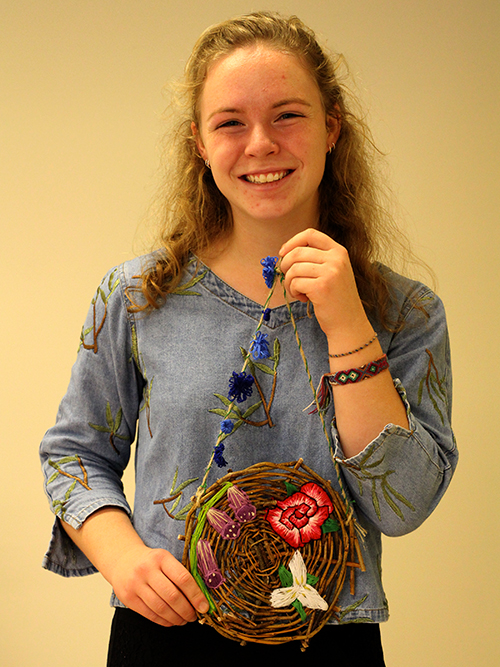 Embroidered flowers on woven willow “My project is a woven base with various flowers embroidered onto it, all with a different childhood memory attached to them. I have always been inspired by embroidery and I was ready to branch out into new applications of the art form.” 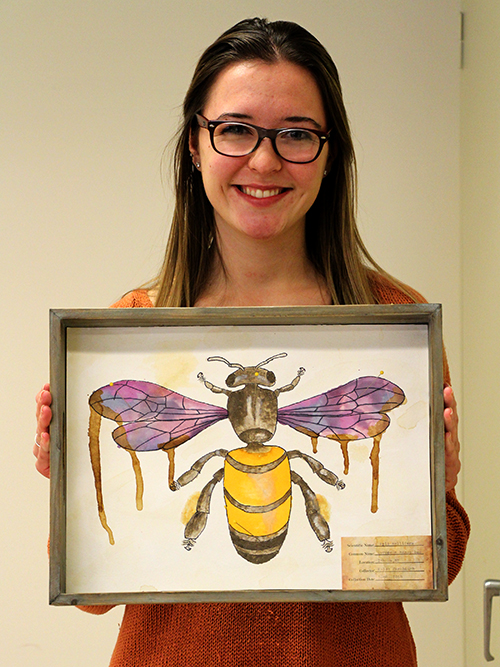 Honeybee specimen drawing created with pigment from strawberries, red raspberries, black raspberries, blueberries, pomegranate, coffee, achiote, soil, and wax. “I decided to let the coffee run to depict honeybees declining and almost melting away due to various factors such as climate change and inappropriate use of pesticides.” 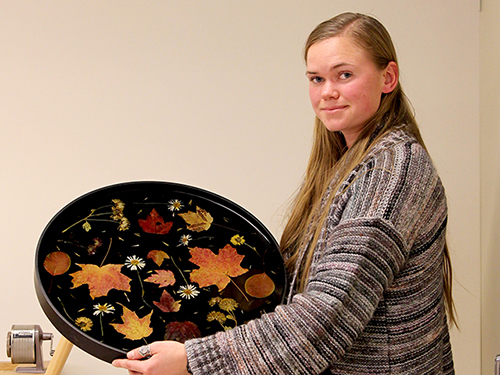 Dried plant specimens cast in resin tabletop. “I am happy that I was able to capture a little bit of the East coast fall season and Cornell into my artwork. I will miss the dramatic fall colors!” 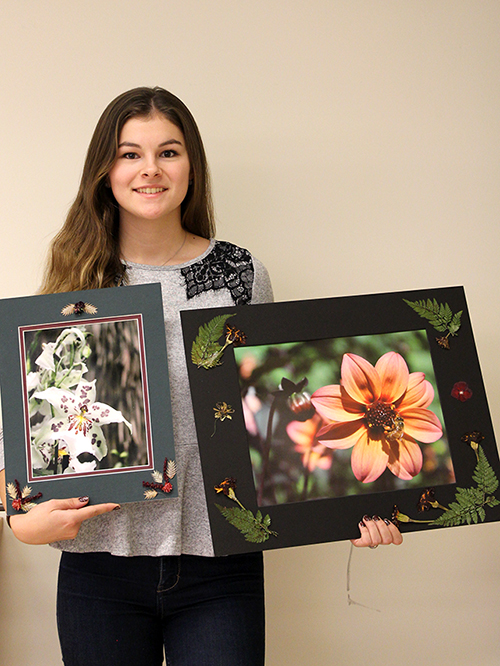 Digital photo prints matted with dried plant material. “As the project becomes older, it is likely that the plant material will age and fade, but the photos will stay bright and vivid long after. This will be an interesting contrast that could be used to demonstrate how photos can preserve things far longer than they could be naturally preserved in physical form.” 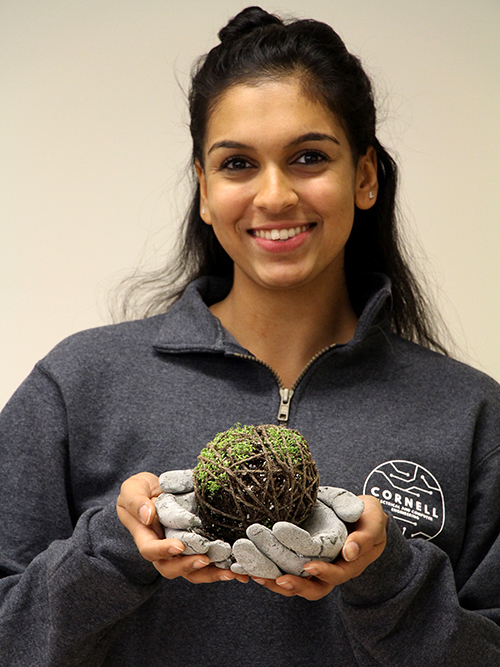 Jute globe with chia (Salvia hispanica) continents in concrete-cast hands. “The piece symbolizes how the fate of our earth, while a huge burden to take on, rests within each and every one of our hands.” 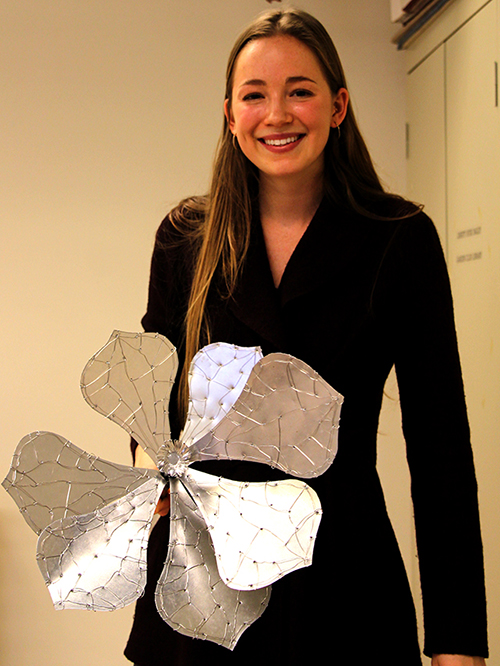 Aluminum cosmos flower sculpture for outdoor installation. Petals are staggered along pole to appear from top as complete flower. “I want this project to represent how sometimes the beauty of nature requires taking a moment to observe and think about how it resonates with you, and appreciate how natural objects exist as a collection of independent forms.” 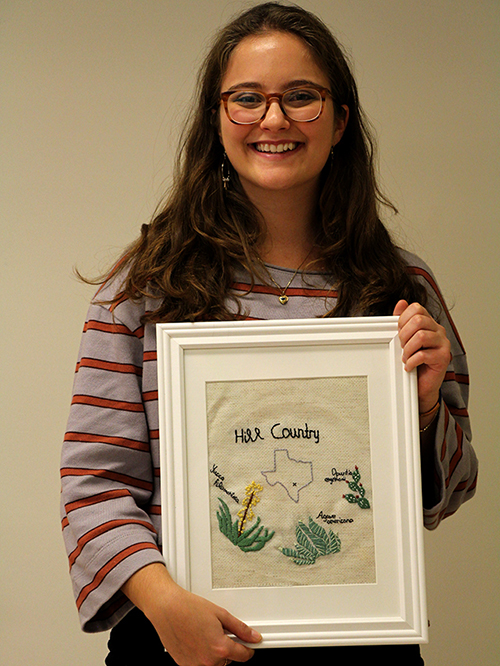 Botanical embroidery of native Texas plants. “…One of my primary goals in this project was to find a unique, less traditional medium to explore my capabilities in the art realm. Since I've never been too keen on drawing, or painting, slowly teaching myself how to embroider definitely gave me a sense of confidence.” 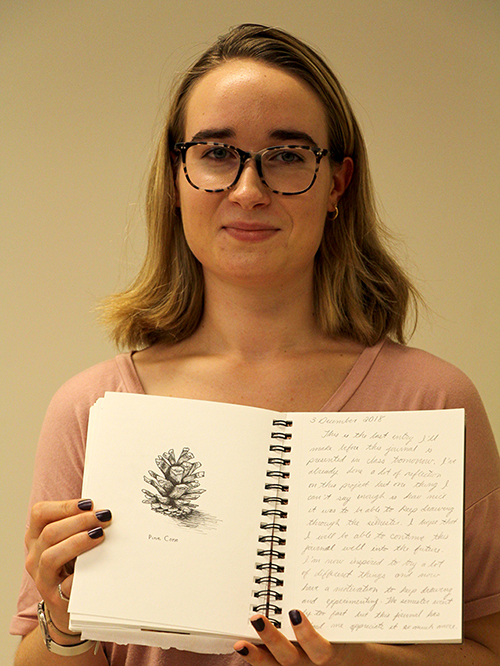 Nature journal with mixed-media drawings and written observations. “I’m really glad that I chose this project because through its simplicity I have been able to learn a lot about the art I was creating and the way I thought about the art… I’m much more excited by drawing now and I feel motivated to keep going with this project through college and beyond.” 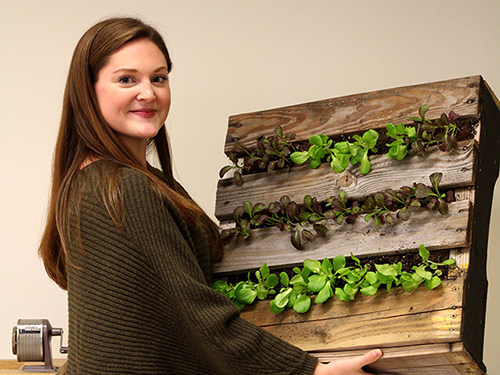 Low-tech vertical growing system. “The goal of the project was not only to create an easily implementable indoor system but also to draw attention to some of the current issues with our modern food system… I wanted the vertical pallet to serve as a reminder to consumers that it is possible to be in control of how and where your food is grown.” 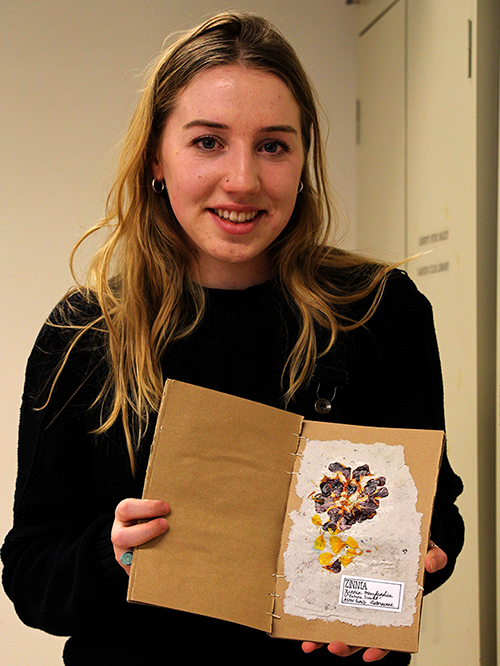 Hand-bound botanical book of dye plants: handmade paper, pressed flowers, illustrations, and information about dye plants from the Robison York State Herb Garden. “I chose this project because I wanted to incorporate art and science. As a biology major art and science are both of importance to me. However, I feel that much of the time art and creativity are separated subconsciously from science. I don't think this is the case I think they are both very much intertwined.” 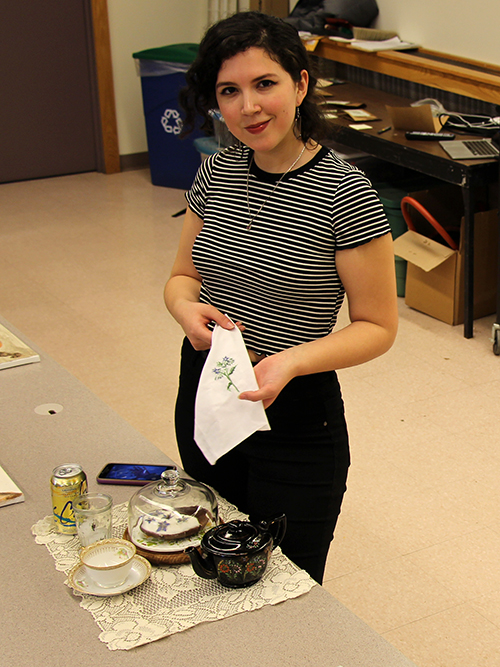 Borage (Borago officinalis) themed table setting for one: candied borage flowers, borage tea, embroidered borage napkin, and borage ice. Not pictured: borage resin plate. Borage (Borago officinalis) themed table setting for one: candied borage flowers, borage tea, embroidered borage napkin, and borage ice. Not pictured: borage resin plate.“I love borage; it’s easy to grow around here (although not native), beautiful, tasty, and bees love them. Yet I’ve heard people call it a weed! Seeing as our bees are disappearing, I’d love to raise awareness of borage’s other secret/forgotten awesomeness to encourage people to plant it and maybe make some bees happy in the process.” 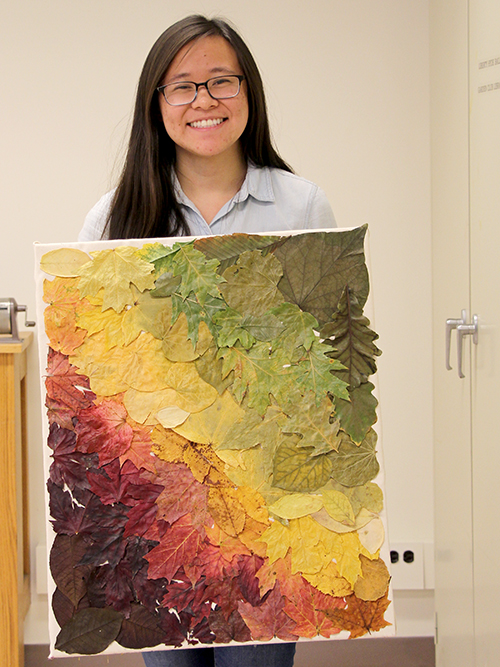 Wax-preserved tree leaves in color gradient on canvas. “I was a little nervous if the gradient would look balanced and if the leaves would stick, but everything worked out perfectly. And now I’ll always have a piece of Cornell with me!” 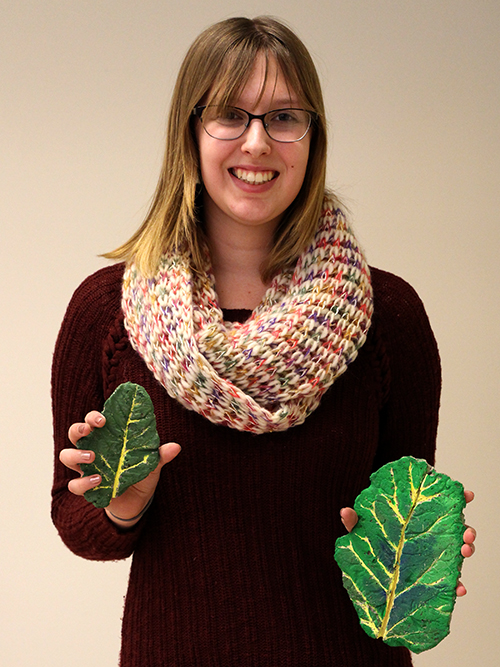 Chard, hosta, and elephant leaf leaves cast in concrete, painted, and shaped into family name. Pictured here are trial leaf castings. “Each leaf represents something important to our family: agriculture, family values, hard times that we always seem to work through.” 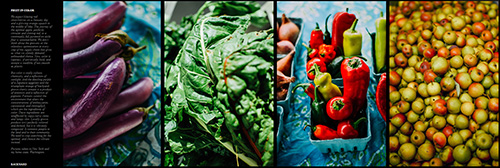 Fruit in color (view photos) "I wanted to show the vibrant colors that exist in local agricultural systems and speak to the fact that people are generally unaware of the processes of the food system, and are uncritical of their consumer preferences."
|
||||